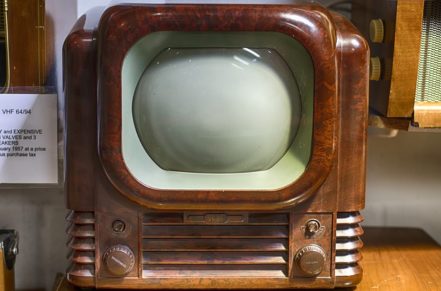
Television
Two Scotsmen played significant roles in the invention of the television, albeit in opposite directions. The route taken by the older of the two, Alan Campbell Swinton, FRS (1863-1930), proved to be the most productive. However, the younger man, John Logie Baird, FRSE (1888-1946), is more famous, even though his mechanical televisions soon became obsolete.
Campbell Swinton set out his ideas for constructing an electronic television using cathode ray tubes, in a letter entitled ‘Distant Electric Vision’ published in 1908. He gave more details in a lecture in 1911. Several engineers had been looking into developing a device for transmitting still and moving images, without much success, and Campbell Swinton gave them the way forward, omitting to patent any of his proposals.
He recognised the disadvantages of mechanical sets and advised the BBC against their use. Nevertheless, Baird was pioneering their production and was the first to demonstrate a working television, in 1926, on the basis of which he formed a manufacturing company. Two years later it was the first to broadcast to a ship and to New York. It also demonstrated the first colour and stereo images, but Philo Farnsworth in the USA was quickly overtaking the field with his Campbell Swinton-inspired electronic TV.
(Image: maxpixel.net)
